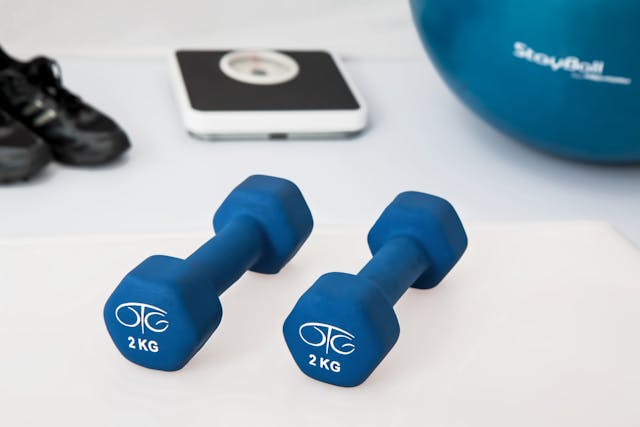Best Exercises for Weight Loss
For effective weight loss, combining cardio, strength training, and high-intensity interval training (HIIT) exercises can create a balanced workout regimen that accelerates calorie burn, builds lean muscle, and supports long-term weight loss. Here are some of the most effective exercises across these categories:

High-Intensity Interval Training (HIIT)
Why It Works: HIIT workouts involve short bursts of intense activity followed by rest, which helps burn more calories in less time, boosts metabolism, and continues to burn calories even after the workout.
-
Examples: Sprinting, burpees, mountain climbers, jumping jacks, and kettlebell swings.
-
Duration: 20–30 minutes, 2–3 times a week.
-
Tip: Alternate between 30 seconds of intense exercise and 15-20 seconds of rest.
Running and Jogging
Why It Works: Running is an efficient calorie-burning exercise and improves cardiovascular health. A steady jogging or running routine helps you burn fat and increases endurance over time.
-
Intensity: Start with a moderate pace, and increase speed gradually.
-
Frequency: 3–4 times per week.
-
Tip: Mix in sprints or uphill running to increase intensity and calorie burn.
Cycling
Why It Works: Cycling is low-impact but effective for burning calories and building leg strength. It also improves cardiovascular fitness and can be done indoors or outdoors.
-
Intensity: Adjust the resistance to make your workout more challenging.
-
Frequency: 3–5 times per week.
-
Tip: Try interval cycling by alternating between fast and slow paces.
Swimming
Why It Works: Swimming is a full-body, low-impact exercise that engages multiple muscle groups while burning a high number of calories.
-
Styles: Freestyle, breaststroke, or butterfly.
-
Frequency: 3 times per week.
-
Tip: Use different strokes to work out different muscle groups.
Strength Training
Why It Works: Building lean muscle boosts your metabolism since muscle burns more calories at rest than fat does. Strength training tones your body and enhances fat loss over time.
-
Exercises: Squats, lunges, deadlifts, bench presses, and shoulder presses.
-
Frequency: 2–3 times per week.
-
Tip: Use weights that challenge you without compromising form and increase weight gradually.
Rowing
Why It Works: Rowing works both the upper and lower body and is great for burning calories and improving endurance.
-
Duration: 20–30 minutes at moderate to high intensity.
-
Frequency: 2–3 times per week.
-
Tip: Focus on maintaining a strong rowing form for maximum effectiveness.
Jump Rope
Why It Works: Jumping rope is a highly effective cardio workout that can help burn significant calories quickly and also improves coordination and agility.
-
Duration: 10–20 minutes.
-
Frequency: 2–3 times per week.
-
Tip: Start slow and gradually increase speed as you get comfortable with the movement.
Walking and Power Walking
Why It Works: Walking may seem simple, but brisk walking can burn calories effectively, especially for beginners or those with joint issues. Power walking adds intensity, boosting calorie burn.
-
Duration: 30–60 minutes, aiming for a brisk pace.
-
Frequency: Daily or several times a week.
-
Tip: Walk uphill or at an incline to increase difficulty and calorie burn.
Kickboxing
Why It Works: Kickboxing is a high-energy cardio workout that also improves muscle strength and flexibility. It can burn significant calories and is a great stress reliever.
-
Duration: 30–45 minutes.
-
Frequency: 2–3 times per week.
-
Tip: Incorporate fast jabs, kicks, and punches for a more intense workout.

Elliptical Machine
Why It Works: The elliptical is an excellent low-impact cardio option that mimics running and stair climbing without putting pressure on the joints.
-
Duration: 30–40 minutes at moderate intensity.
-
Frequency: 3–4 times per week.
-
Tip: Use the handles to work your arms as well and increase the resistance for a tougher workout.
Tips for Effective Weight Loss with Exercise
-
Stay Consistent: Consistency is key. A mix of cardio and strength training throughout the week helps maintain a steady calorie burn.
-
Combine with Healthy Eating: Regular exercise combined with a nutritious diet is the most effective approach to sustainable weight loss.
-
Rest and Recovery: Rest days help muscles recover and prevent burnout.
-
Stay Hydrated: Proper hydration aids in energy levels and recovery.
-
Track Progress: Track workouts to keep yourself motivated and adjust intensity as needed.
By mixing these exercises and following a balanced routine, you can create an effective workout plan that promotes healthy weight loss and improves overall fitness.












